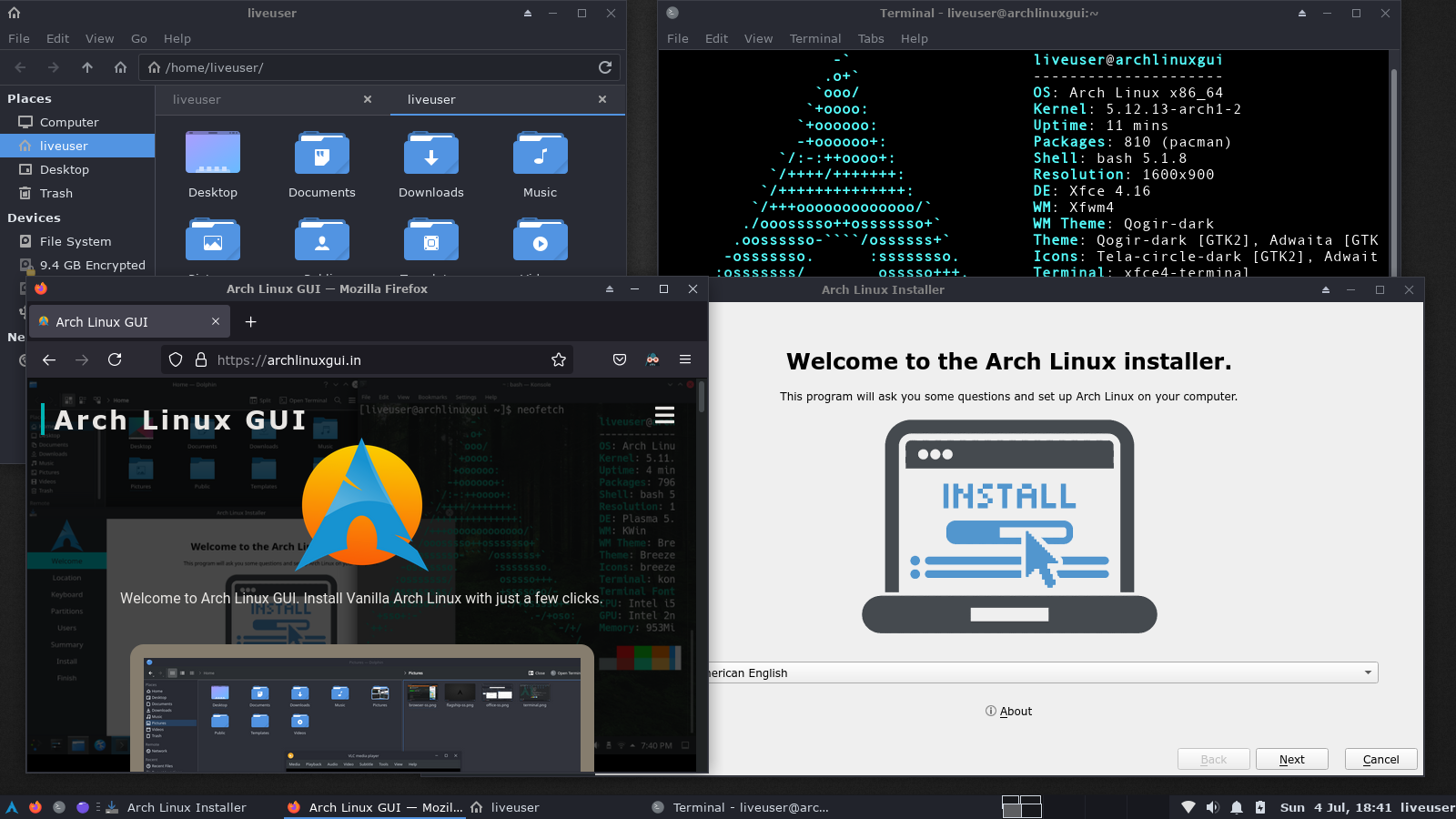
HDMI video output is only supported on the Apple silicon Mac mini, and there is no support for Thunderbolt video output on Apple Silicon MacBooks and iMacs.
#Arch linux gui drivers
The process has involved creating device drivers for Apple silicon's proprietary GPU from scratch due to the lack of documentation. Vulkan and OpenCL support, as of Early-Mid 2023, still being worked on.
#Arch linux gui driver
While initially using the panfrost driver implementation, the Asahi Linux Project also made use of Gallium-3D and Rust based APIs for driver development. It can display a graphical user interface and has early support for graphics acceleration, with initial OpenGL being implemented for all GPUs across Apple's M-series chips. ( February 2023)Īsahi Linux is currently considered alpha software.
#Arch linux gui update
Please help update this article to reflect recent events or newly available information.

The effort began in late 2021, and is an upstream-first project. In August 2023, it was announced that Asahi was partnering with the Fedora Project to release the Fedora Asahi Remix, which would supersede the original Arch-based distribution as Asahi's flagship OS. In July 2022, the Asahi Linux team released an update with support for the M1 Ultra, Mac Studio, and early initial support for the M2 MacBook Pro. While other projects that are attempting to study a possible port of Windows to these systems specified challenging roadblocks related to Windows handling the proprietary Apple Interrupt Controller (AIC), and the 16K pages only found on the IOMMU.įull support for all Apple silicon-supported Macs is not expected for another year or two following the first alpha release. Despite being able to launch a UEFI shell, booting Microsoft Windows is not supported, and there are no plans to do so, as it would involve modifying the proprietary Windows kernel. The installer offers the choice of a desktop based on Arch Linux ARM (expected to change), a minimal environment, or a basic UEFI environment for installing OpenBSD or alternate Linux distributions with support for Apple silicon via a bootable USB drive. The project released an experimental alpha version of the Asahi Linux installer on March 18, 2022. However, it subsequently led to a thorough and comprehensive explanation of the previously undocumented boot process, which Martin and others published on GitHub.

The work was time-consuming and took most of the year, including submitting pull requests to the main Linux kernel developers to keep development in sync and avoid regressions. The developers quickly realised that just attempting to boot the Linux kernel compiled for Apple silicon's processor architecture ( AArch64) would be challenging, as it involved working out the functionality of proprietary Apple code used in the boot process. Alyssa Rosenzweig, who developed the open-source graphics driver stack Panfrost, joined the project to help support the Apple silicon graphics processing unit (GPU). Martin announced the project in December 2020 and formally started work a month later, after securing crowd-sourced funding.
#Arch linux gui software
Shortly after Apple announced their transition away from Intel x86 processors in late 2020, Linux creator Linus Torvalds expressed interest in Linux support for the Apple M1 Mac, but thought that the work to make this happen was too time-consuming for him to personally take on the necessary software development tasks. The project has been made challenging by the lack of publicly available documentation of Apple's proprietary firmware. An initial alpha release followed in 2022. Work began in early 2021, a few months after Apple formally announced the transition to Apple silicon. The software design project was started and is led by Hector Martin.

Asahi Linux is a project that ports the Linux kernel and related software to Apple silicon-powered Macs.


 0 kommentar(er)
0 kommentar(er)
